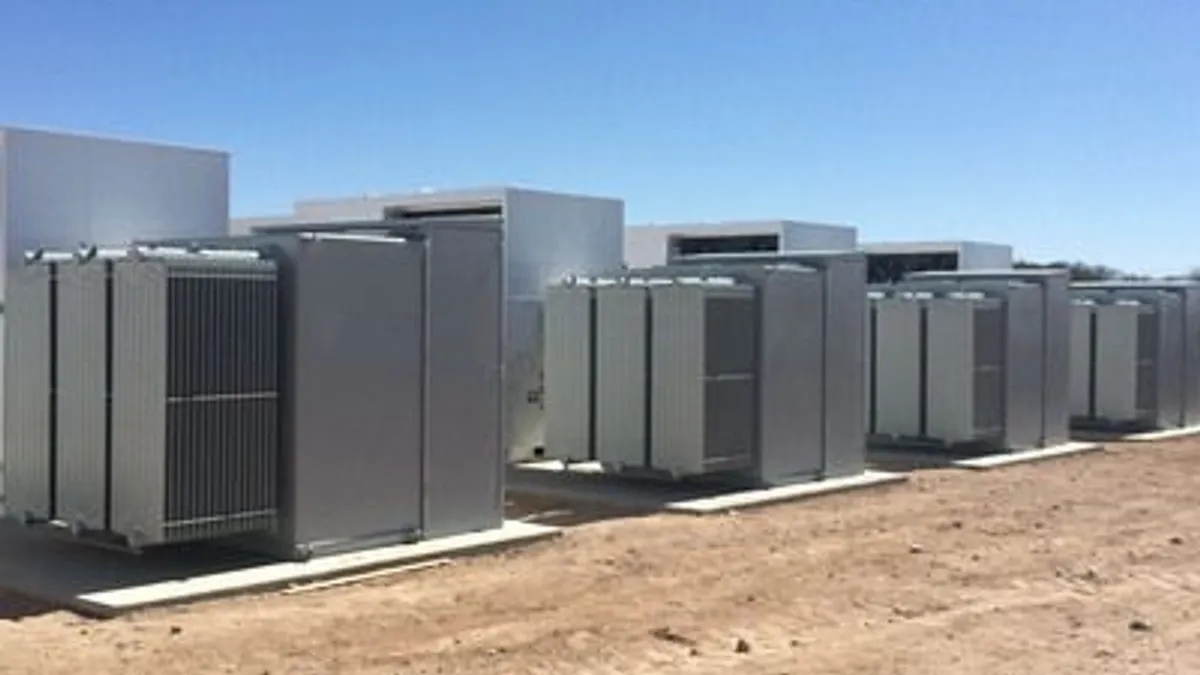Tucked away in the Federal Energy Regulatory Commission’s April 19 revision of its large generator interconnection agreement are easily overlooked provisions that could benefit energy storage providers.
Order 845 revises the commission’s large generator interconnection agreement in several ways. It's the conclusion of a process that began with a notice of proposed rulemaking in 2016 that was prompted by a complaint filed by the American Wind Energy Association.
For energy storage, the most obvious change in Order 845 is that it revises the definition of generating facility to explicitly include electricity storage. But the scope of 845 is much wider than energy storage. It revises interconnection rules and protocols for any generator larger than 20 MW.
One of the main changes FERC is putting in place with Order 845 is to allow interconnection customers to request a level of interconnection service that is lower than the capacity of their generating facility.
That is an issue that has become increasingly prevalent with the rise of renewable resources such as wind and solar power for which electrical output seldom equals nameplate capacity.
Improving the interconnection process
FERC says that changes such as more closely aligning output and nameplate capacity will help improve the interconnection process. Many interconnection customers experience delays and some interconnection queues have significant backlogs, according to FERC. As a result, there is also a recurring problem of late interconnection request withdrawals that can lead to interconnection restudies that can increase costs and timelines for other participants in the interconnection queue, FERC says.
Among the other changes brought about by Order 845 is that it requires transmission providers to allow for provisional interconnection agreements for limited operation of a generating facility prior to completion of the full interconnection process. The order also requires transmission providers to create a process for interconnection customers to use surplus interconnection service at existing points of interconnection.
“We expect these reforms to provide interconnection customers with better information and more options for obtaining interconnection service such that there are fewer interconnection requests overall and fewer interconnection requests that are unlikely to reach commercial operation,” FERC said in the filing. “As a result, we expect transmission providers will be able to focus on those requests that are most likely to reach commercial operation.”
Order 845 is “very exciting for accelerating energy storage deployment,” Jason Burwen, vice president for policy at the Energy Storage Association, said in a tweet.
In addition to the fact that Order 845 recognizes energy storage as a resource in its own right — rather than requiring storage to conform to rules designed for generators — the order will allow interconnection agreements to be tailored to the level of service requested, which can be lower than nameplate capacity.
That could allow storage owners to avoid costly transmission system upgrades by asking for interconnection below the rated capacity of their units. “That's really big when combined with Order 845’s creation of a new surplus interconnection agreement — an expedited (i.e., non-queued) process to interconnect new facilities with existing generators that aren’t using all their capacity all the time,” Burwen tweeted.
The result of the existing system is that there is a lot of spare capacity on the transmission system. But energy storage could be added to the system to use up some of that spare capacity, for instance, by being paired with a wind or solar power facility and be used to discharge at night or when the wind is not blowing. That is why allowing a facility to interconnect below its nameplate capacity is important, Burwen said on Twitter.
Hybrid generation opportunities
Previously, a 50 MW generator and a 25 MW storage device would be studied as a 75 MW facility for reliability purposes. But Order 845 allows the facility to be studied as the original 50 MW generator as long it does not exceed 50 MW of production. And, since the overall capacity request is not larger, the approval process can take place outside the interconnection queue. This should allow opportunities for co-locating with energy storage to open up soon, Burwen tweeted, adding that co-location projects could start to take off as soon as this year.
In fact, co-location, or hybrid generation, projects are already showing up in the marketplace. Last fall, Vestas Wind Systems and Windlab joined forces to develop a power project in Queensland, Australia, that combines 43.2 MW of wind turbines, 15 MW of solar panels and a 2 MW/4 MWh lithium-ion battery.
In March, Florida Power & Light paired a 10 MW/40 MWh battery to an existing 74.5 MW solar farm. And General Electric has introduced a hybrid gas turbine that incorporates a 10 MW/4.3 MWh battery device with a 50 MW gas turbine designed to allow the turbine to ramp up more quickly and reduce fuel consumption.
Overall, “Order 845 includes a set of common-sense provisions that should enable energy storage to utilize spare capacity on the transmission system,” Burwen said on Twitter. More electric service with the same amount of transmission equals more efficient use of transmission dollars, he added.
“FERC is trying to open the door pretty wide for storage,” Tim Grejtak, an analyst at Lux Research, told Utility Dive. FERC is creating “yet another opportunity for storage to participate in the market,” he said.





















